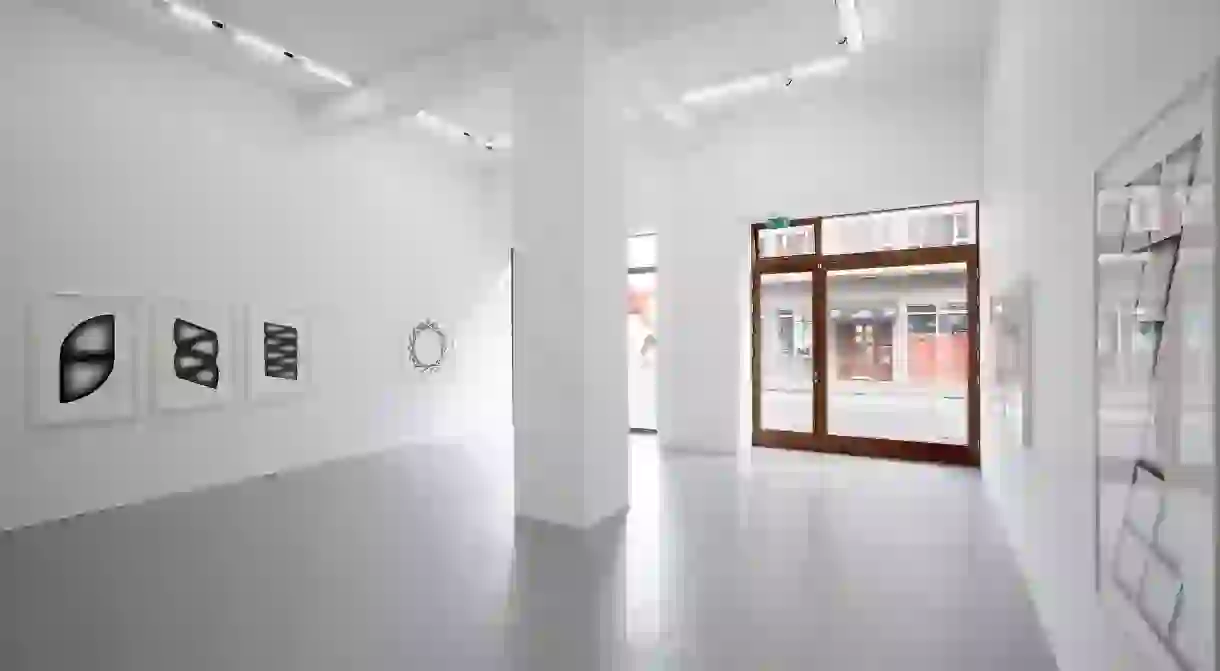Artist Ingibjörg Sigurjónsdóttir On Reykjavík’s Contemporary Art Scene

Artist Ingibjörg Sigurjónsdóttir has long been a part of Reykjavík’s contemporary art scene. Culture Trip catches up with her to discover what sets the Icelandic art scene apart from those of other European nations, and which artists to look out for on a trip to the country’s capital.
Reykjavík boasts a burgeoning contemporary art scene and, despite its relatively small size, is home to artists whose number and quality matches that of a much larger city. Icelandic art comes to life in innovative galleries sprinkled throughout the streets, showcasing everything from cutting-edge experimentation to more mainstream forms of creative work. But what is it about Reykjavík that fosters such a fantastic art scene?
“Freedom, expression and experimentation are descriptions that come to mind when thinking about the contemporary art scene in Reykjavík,” says Ingibjörg Sigurjónsdóttir, one of the capital’s most acclaimed artists. Undoubtedly, the incredible nature on the city’s doorstep, Iceland’s unique geographic location halfway between Europe and North America and Reykjavík’s cosmopolitan vibe all contribute to the city’s unique style. But as Sigurjónsdóttir explains, it’s the community itself that sets it apart from other European capitals. “The scene here is vibrant. Everyone is incredibly passionate about art and the language and dialogue that comes with it.
“There’s this underlying feeling of generosity that makes it such a pleasure to be an artist in the city. Everything is driven by the artists themselves; many are passionate about creating platforms for other artists to exhibit or share their work in some way,” Sigurjónsdóttir explains.
This was the main idea behind Kling og Bang, an artist-led collective that was originally founded as a venue for young creatives to display their work. It was formed in 2003; Sigurjónsdóttir joined the team in 2010. “Kling og Bang is run by volunteers, all of us artists … We aim to strike a balance between lending a helping hand to emerging artists looking to host their first solo show, and acting as a venue where more established national and international artists can display their work.”

Traditionally, Icelandic artists have always pursued their education abroad before returning home, bringing an international flavour to the scene that contrasts with the community vibe in Reykjavík. This is what characterises contemporary art in the city: the diverse experience of its artists coming together in a progressive society, where they’re able to encourage each other and in turn expose younger creatives to different international influences. It makes for some explosive and high-quality work that’s as varied as it is interesting.
Born and raised in Reykjavík, Sigurjónsdóttir attained her art degree in Vienna before moving back to Iceland. “Being an artist in Reykjavík is superb because of the great group of people that make up the scene. Across disciplines there’s this amazing willingness to get involved. When someone gets an idea, it’s never hard to round up people to make it happen, just for the heck of it,” she says. Her sculptural works explore the question of human existence and the tensile strength and contours of art. Intrinsically linked to the Reykjavík scene, she’s perfectly positioned to tell us all about the artists to look out for on a trip to Iceland’s capital.
Ólafur Elíasson, the Danish-Icelandic Superstar
One of Iceland’s most famous contemporary artists, Ólafur Elíasson is most often the first name on people’s lips when discussing the country’s art scene. “He doesn’t really need an introduction; his work is classic. You can always see some of his work on display in the Marshall House,” says Sigurjónsdóttir, referring to the Living Art Museum that occupies the first floor of the building. With artworks spanning sculptures, paintings, photography, films and installations, Elíasson strives to make his works relevant to society at large. He also has works on display at i8 Gallery.
Guðný Rósa Ingimarsdóttir, for art that explores human emotions
Although she’s based in Brussels, Guðný still plays an active role on the Icelandic art scene. “Ingimarsdóttir is one of my long-time favourite artists. She beautifully combines delicacy and audacity at the same time in her multilayered drawings and paintings,” says Sigurjónsdóttir. Cutting, peeling and carving her drawings over many years, Ingimarsdóttir captures pain and acceptance while celebrating the simple things in life. Catch some of her work on display at Hverfisgallerí.

Ragnar Kjartansson, the Icelandic artist of the 21st century
Kjartansson’s work spans multiple media, from video installations and live performances to drawings and paintings. All of them blur together, borrowing elements from each other. He approaches painting as live performances and his films as paintings, but ultimately it’s all connected through historical and cultural references. The Guardian ranked his visual piece The Visitors (2012) as the number-one artwork of the 21st century; his work is on regular display at i8 Gallery.

Hildigunnur Birgisdóttir, for works that explore everyday simplicity, tragedy and materialism
Hildigunnur Birgisdóttir’s work transforms everyday objects found in her life into precise works of art. Sigurjónsdóttir says, “Birgisdóttir is an innovative and brilliant artist with a unique mind. Her work discloses all the tragedies of living on this earth, but at the same time makes it all bearable. She simultaneously questions and embraces materialism.” Birgisdóttir’s art is on display at i8 Gallery.
Hrafnhildur Arnardóttir (Shoplifter), for art bursting with colourful energy
Based out of New York, Shoplifter works mainly with synthetic and natural hair, with her installations, sculptures and murals exploring themes of vanity, self-image, fashion and beauty. Sigurjónsdóttir explains, “She’s currently exhibiting her immersive, hairy and colourful installation Chromo Sapiens at Reykjavík Art Museum Hafnarhús. She showed the piece in Venice in 2019 to great acclaim.” Check Shoplifter’s website for upcoming shows; in the past, she has presented her work at almost all of Reykjavík’s galleries.

This article is an updated version of a story created by Kirsten Nicholas.













